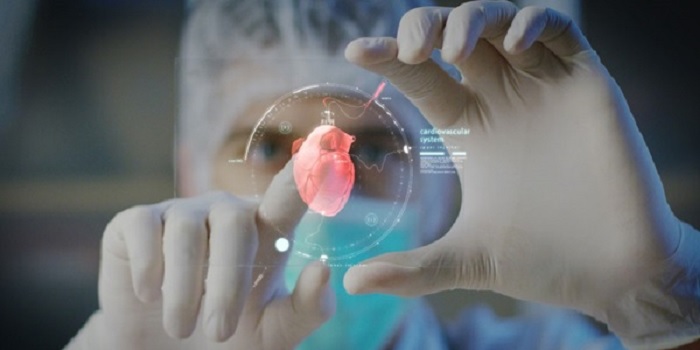Strengthening Your Cardiology with Single-Click Comprehensive Reporting

Although almost half of all US adults have at least one form of heart disease, their experiences may vary drastically. While some people have a range of symptoms, others are asymptomatic. Cardiovascular disease, including issues with the heart or blood muscles, come in several forms. Irregular heart rhythms, heart valves functioning incorrectly, heart or blood vessel issues presenting at birth, or the narrowing of blood vessels in the heart or organs are just a few examples of the hazards of cardiovascular disease.
Types of heart disease include:
- Arrhythmia: Abnormal heart rates of rhythms resulting from a faulty electrical conduction system
- Valve disease: The tightening or leaking of heart valves
- Coronary artery disease: Problems, including blockages, with the heart’s blood vessels
- Heart failure: Fluid buildup and shortness of breath resulting from heart pumping and relaxing functions disruptions
- Peripheral artery disease: Narrowing or blockages of the blood vessels in a patient’s arms, legs, or abdominal regions
- Aortic disease: Dilatations or aneurysms within the large blood vessel, which is responsible for directing blood from the heart to the brain and body
- Congenital heart disorder: Heart defects that a patient is born with, impacting different areas of the heart
- Pericardial disease: Issues occurring with the lining of the heart, including pericarditis and pericardial effusions
- Cerebrovascular disease: Narrowing or blockages of the blood vessels responsible for delivering blood to the brain
- Deep vein thrombosis: Blockages occurring in the veins and vessels in charge of transporting blood from the brain and body to the heart
The Benefits of Comprehensive Reporting
While symptoms of heart disease differ, the most common ones include chest pain, shortness of breath, dizziness, fainting, chest pressure or discomfort, and fatigue or exhaustion. For women and older adults, the symptoms may be more subtle. Indicators of blood vessel blockages include long-lasting leg sores; pain or cramping in legs; red or cool-feeling skin; leg swelling; numbness in the face, limbs, or on one side of the body; and complications with talking, seeing, or walking. There’s a range of risk factors for cardiovascular disease, with the most common ones being high blood pressure, high cholesterol, or tobacco usage. Others include:
- Type two diabetes
- Family history of heart disease
- Excess weight or obesity
- Lack of physical activity
- Diet high in sodium, sugar, or fat
- Alcohol overuse
- Misuse of prescription of recreational drugs
- Preeclampsia or toxemia
- Gestational diabetes
- Chronic kidney disease
- Chronic inflammatory or autoimmune conditions
Due to the range of symptoms, risk factors, and disease types, a medical report is vital for developing a strong treatment plan. Created by a team of medical professionals after a full body examination, a comprehensive medical report provides vital information on a patient’s health, including their symptoms, test and lab results, co-occurring conditions, vital signs, and diagnosis. This report is integral to providing the patient with the individualized, full-body care that they require for improved outcomes.
Strengthen Cardiology with the Addable Vascular Ultrasound Module
With EncaptureMD’s Vascular Ultrasound—a modality easily added to the NovaCardio PACS system—cardiologists can gain a complete spectrum of full-body comprehensive reports. The Vascular Ultrasound enables them to have high-quality, comprehensive reports, which are developed automatically. From transcranial doppler to lower extremity artery and vein imaging, the addable modality handles it all. Designed by experienced clinicians and accreditation specialists, the Vascular Ultrasound modality offers a quick and simple way to develop accreditation-compliant reports, including transcranial, carotid, upper extremity artery and vein, mesenteric, abdominal aortoiliac vein, renal and renal graft, and lower extremity artery and vein reporting.
Additional features of EncaptureMD’s Vascular Ultrasound modality include:
- Complete integration with CPACS, PACS, and Showcase viewers
- IAC-compliant reports for all anatomical areas
- DICOM DR data transfer from the US machine
- Specialty reports, including PPG
- Cold sensitivity
- Thoracic outlet obstruction maneuver testing
- Integration, data flow, and waveform with Parks Flowlab
While comprehensive medical reports are linked to improved patient outcomes, doctors who write them manually are vulnerable to burnout. Eliminating redundancy and manual tasks is partially critical to the well-being of cardiologists, who reported increased rates of burnout following the COVID-19 pandemic.
The Vascular Ultrasound modality offers key features for providing high-quality reports without any hassle:
- Aortic drawing: Eight baseline drawings are presented, enabling cardiologists to select the image most like their patient and modify it as needed. Cardiologists can add more words and numbers to each drawing.
- Carotid data entry: Measurements flow from the US machine to the display. Phrases may be easily generated.
- Vascular report: Automatically generated comprehensive reports include measurements, diagrams, and text conclusions. This feature can document combined vascular studies.
- Artery drawings: The Vascular Ultrasound Modality enables cardiologists to include graphics in their report, communicating where probes are located in a way that images don’t allow.
- Venous diagrams: Cardiologists can select the large veins, superficial veins, or the entire tree as the drawing’s base before adding clots or varicosities wherever they’re located.
- Parks FlowLab import: Cardiologists can create a single, combined report with the data and waveforms transferred to Encapture MD’s vascular reports. These may include doppler, segmented pressures, and PVRs.
Automatically generated comprehensive reports, with detailed head-to-toe information on each patient and their unique symptoms, are easily created with the Vascular Ultrasound modality. Eliminating manual report writing and strengthening your cardiology with state-of-the-art reports, including diagrams, graphics, and transferred data, all from a single modality, are made simple.
Here at Novarad, we believe that the key to a successful imaging center is to work smarter, not harder, to deliver the type of care and outcomes that patients desire.
To see how we can help improve your workflows, feel free to reach out to our workflow specialists today!
%20(3).png?width=1555&height=462&name=Novarad%20EHS%20Logo%20Full%20Color%20(1)%20(3).png)
